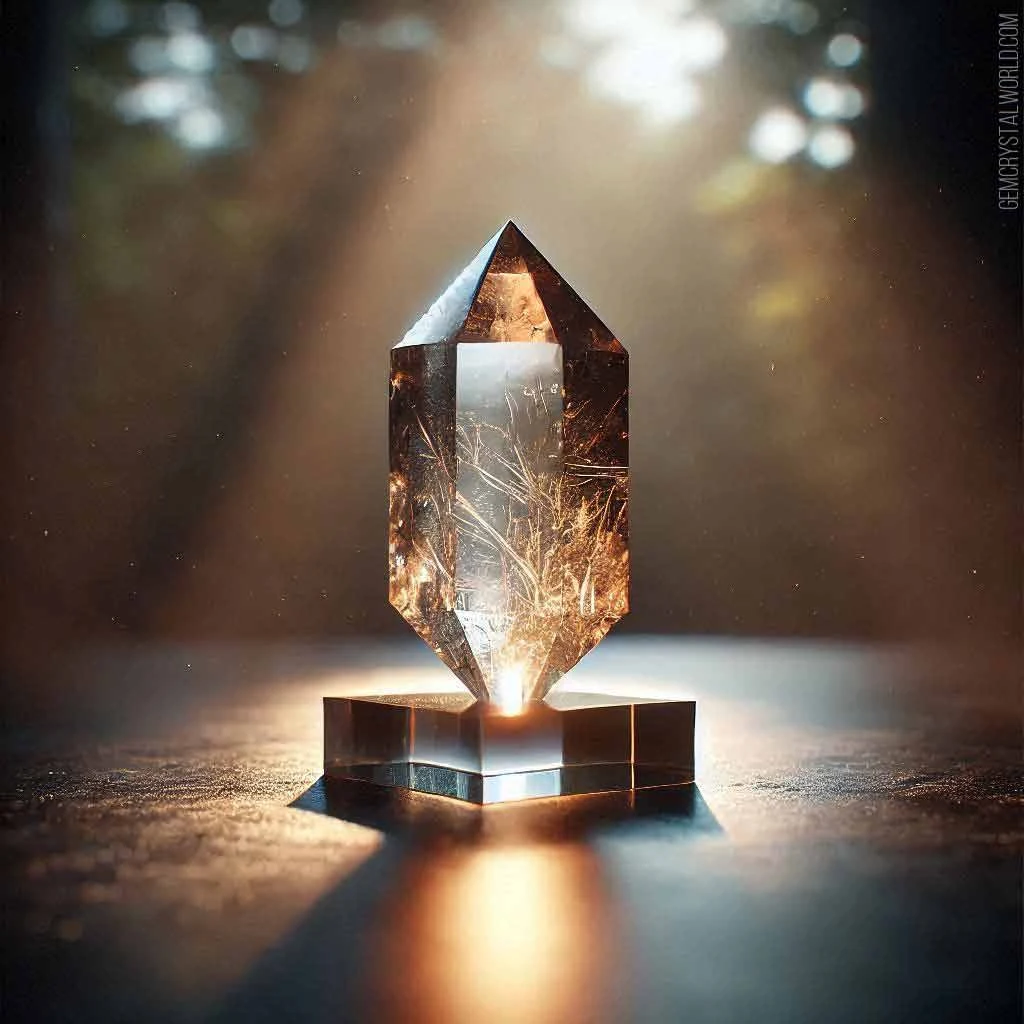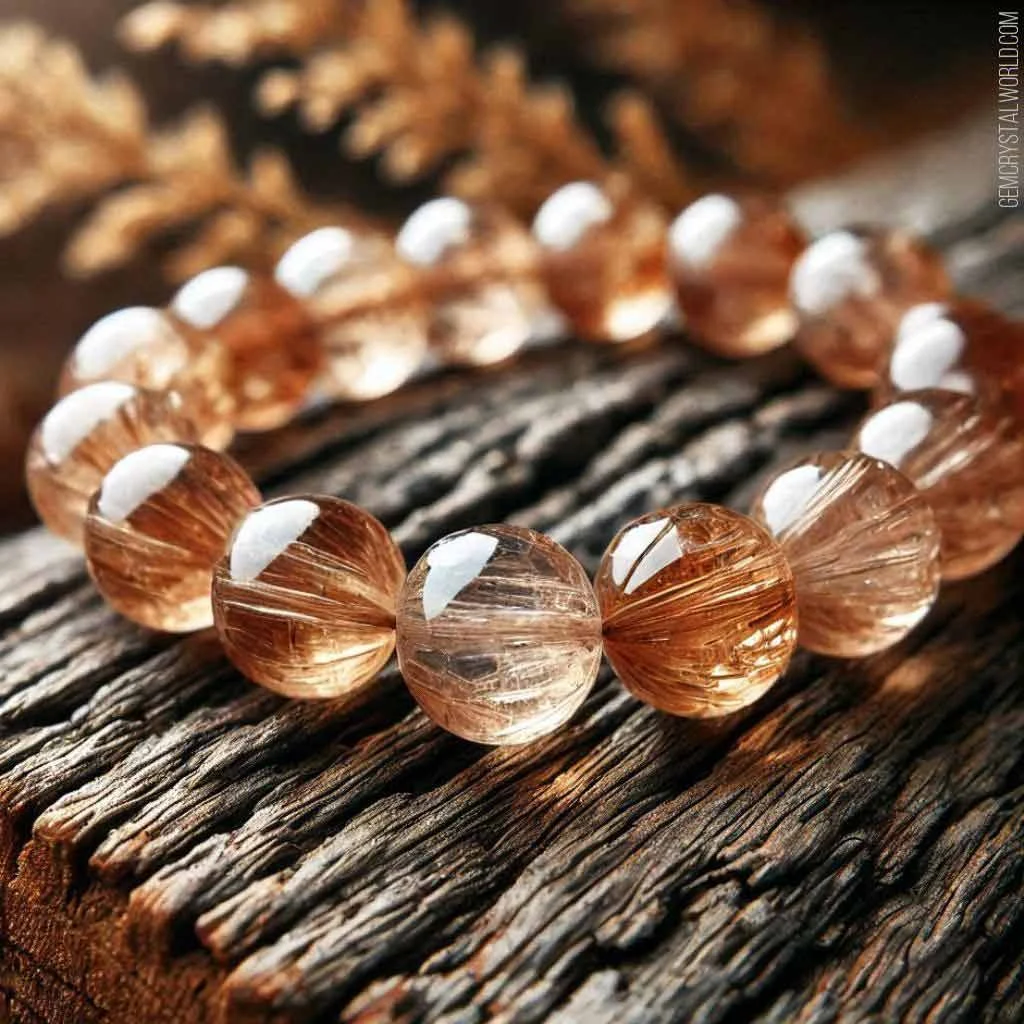Rutilated Quartz: Unveiling the Mystical Beauty of Nature's Artwork
Rutilated Quartz: A Mesmerizing Crystal of Natural Art and Metaphysical Wonder
Introduction
Rutilated quartz is a captivating gemstone that stands out in the mineral world for its unique and stunning appearance. Often referred to as "Venus' Hair Stone" or "Cupid's Darts," this extraordinary crystal is distinguished by its remarkable inclusions of rutile crystals that create intricate, needle-like patterns within clear or smoky quartz. This comprehensive guide will explore every facet of rutilated quartz, from its geological origins to its cultural significance and metaphysical properties.
 |
| Discover the fascinating world of rutilated quartz |
What is Rutilated Quartz?
Rutilated quartz is a variety of quartz crystal characterized by needle-like rutile inclusions that create breathtaking internal landscapes. These golden, black, red, or green rutile threads look like delicate strands suspended within the translucent or semi-transparent quartz matrix, making each stone a unique work of natural art.
Technical Characteristics
- Mineral Name: Quartz (with Rutile Inclusions)
- Chemical Composition: Silicon Dioxide (SiO₂) with Titanium Dioxide (TiO₂) inclusions
- Hardness: 7 on the Mohs Scale
- Color: Clear to smoky quartz with golden, black, red, or green rutile threads
- Crystal System: Trigonal
- Luster: Vitreous
- Transparency: Translucent to transparent
 |
| Polished sphere of rutilated quartz in a gift box |
Geological Formation and Origin
Formation Process
Rutilated quartz forms through complex geological processes involving high-temperature and high-pressure environments. During the crystallization of quartz, rutile (titanium dioxide) minerals become trapped within the growing quartz crystal. These inclusions occur when:
- Magmatic processes create conditions for simultaneous mineral crystallization
- Hydrothermal fluids carry titanium-rich minerals during quartz formation
- Metamorphic transformations facilitate mineral integration
 |
| Remarkable crystal of transparent rutilated quartz, extracted during a geological expedition to the Polar Urals |
Quote: "Two groups of quartz minerals are referred to as "hairy ones": partly transparent and pure rock crystals, smoky topazes, and amethysts with large clearly distinguishable hairs, threads, or elongated crystals of various other minerals; partly solid masses of fibrous minerals permeated with quartz or chalcedony.
The first group includes the actual "hairy ones", "Venus's hair", "Cupid's arrows" and so on; the second group includes a large group of "tiger's eye" with needles of golden crocidolite and similar minerals like "falcon's eye" and "cat's eye", etc. This second group is little known to us.
However, the first group deserves some attention, and for a long time, Ural collectors have enthusiastically collected samples of the most beautiful and diverse "hairy ones" of the Urals" - Alexander Fersman (1957) Stories about Precious Stones
Global Deposit Locations
Significant rutilated quartz deposits are found in:
- Brazil (primary source, especially Minas Gerais)
- Madagascar
- Pakistan
- Russia
- United States (Colorado and California)
- Australia
 |
| Bracelet made of beads crafted from beige-colored rutilated quartz |
Mining and Extraction
Mining Techniques
- Open-pit mining
- Underground mining
- Artisanal small-scale mining in select regions
Production and Economic Aspects
According to recent geological surveys, annual global production of rutilated quartz is estimated at approximately 50-75 metric tons. Prices vary widely:
- Raw mineral: $5-$50 per kilogram
- High-quality specimens: $100-$500 per kilogram
- Gem-grade rutilated quartz: $500-$2,000 per kilogram
 |
| Pendant made of quartz with inclusions in the form of straw-golden needles |
Jewelry and Artistic Applications
Rutilated quartz is prized in:
- Fine jewelry (rings, pendants, earrings)
- Decorative objects
- Collector's specimens
- Metaphysical and healing practices
 |
| Stylish ring with an insert of smoky quartz with light needle-like inclusions |
Notable Jewelry Designs
- Engagement rings featuring unique rutile patterns
- Statement necklaces
- Cabochon pendants
- Carved figurines and ornamental objects
Average price range for rutilated quartz jewelry:
- Simple rings: $50-$300
- Designer pieces: $500-$5,000
- Collector's items: $10,000+
 |
| Rabbit figurine carved from milky-white quartz with black rutile inclusions |
Metaphysical and Cultural Significance
Spiritual and Healing Properties
- Associated with the Solar Plexus and Crown Chakras
- Believed to:
- Enhance personal power
- Facilitate spiritual growth
- Provide mental clarity
- Support emotional healing
 |
| Whimsical amulet made of rutilated quartz crystals in various shades |
Zodiac Associations
- Predominantly linked with Leo and Gemini
- Recommended for individuals seeking personal transformation
Care and Maintenance
- Hardness of 7 makes it relatively durable
- Clean with mild soap and soft cloth
- Avoid extreme temperatures
- Store separately to prevent scratching
Conclusion
Rutilated quartz represents a fascinating intersection of geological wonder, artistic beauty, and metaphysical intrigue. Whether appreciated for its scientific marvel, aesthetic appeal, or spiritual potential, this extraordinary crystal continues to captivate mineral enthusiasts, jewelry lovers, and spiritual practitioners worldwide.
FAQ Section
Q: Is rutilated quartz natural?
A: Yes, rutilated quartz is a completely natural formation occurring through complex geological processes.
Q: What causes rutile inclusions?
A: Rutile inclusions result from titanium dioxide minerals becoming trapped during quartz crystal formation under specific temperature and pressure conditions.
Q: How hard is rutilated quartz?
A: With a 7 on the Mohs hardness scale, it's relatively durable and suitable for jewelry.
Bonus Content
🔍 High-resolution images of rutilated quartz are available for free download at GemCrystalWorld.com. We appreciate a kind attribution if you share our content!




